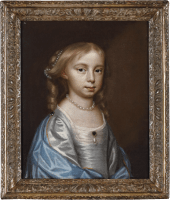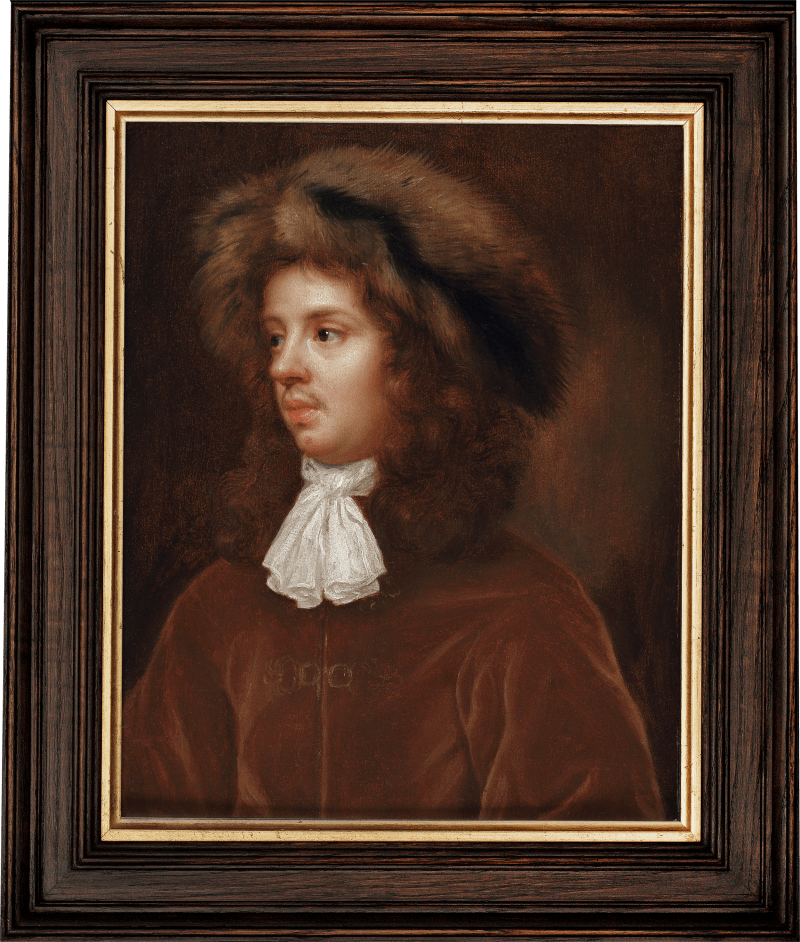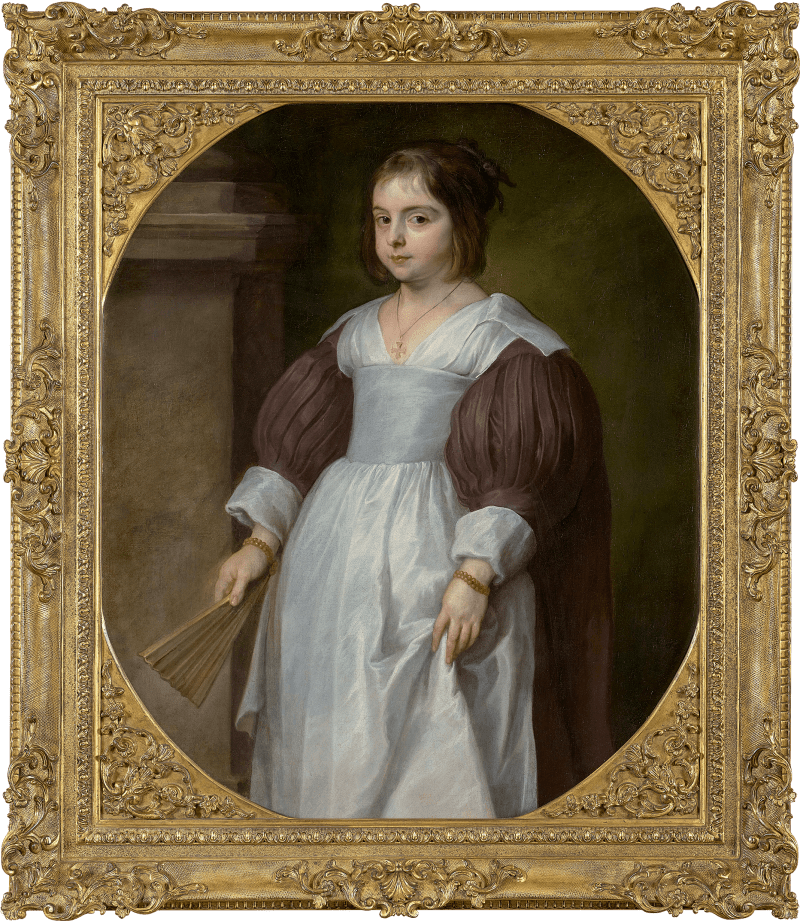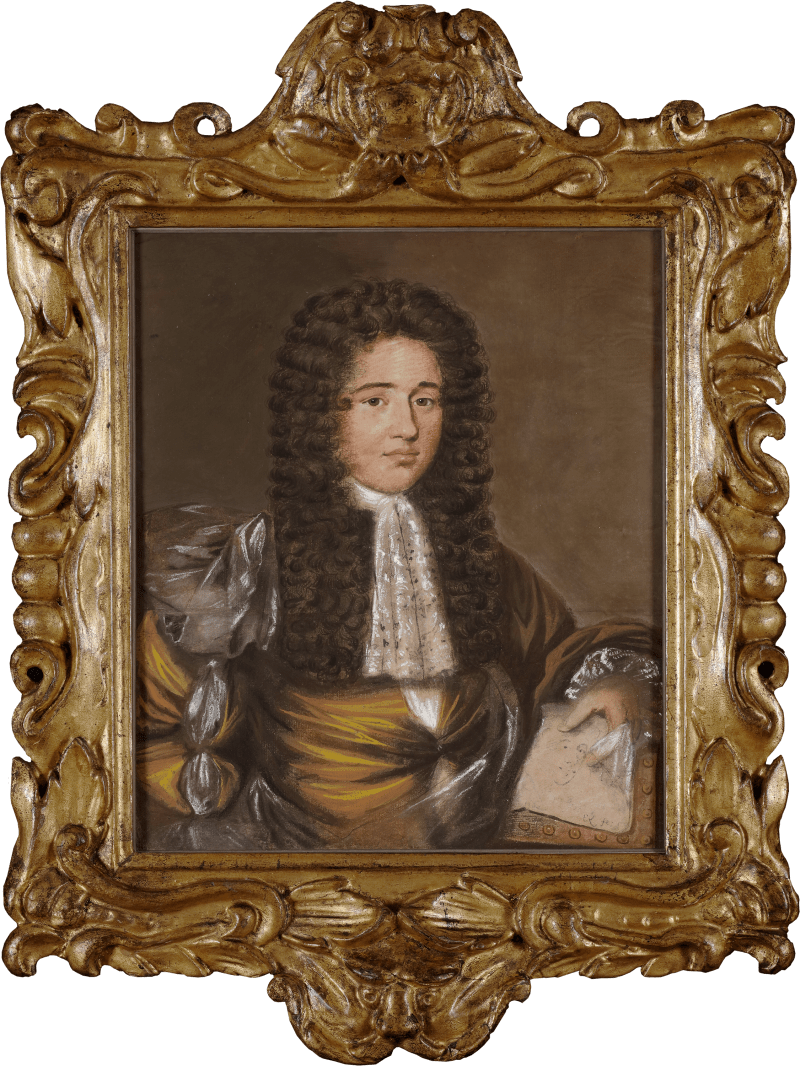Painted in the early 1670s, during the formative years of Beale’s studio on Pall Mall, this sensitive likeness of a young girl presents a highly finished example of her formal child portraiture.
The sitter has been identified as Elizabeth Jones, daughter of Sir William Jones and Mrs Elizabeth Robinson (née Alleyn). Sir William was a prominent lawyer, and the present work was commissioned when his career was on the ascent; he was made Solicitor General in 1673 and promoted to Attorney General in 1675. He was probably introduced to the artist by Beale’s husband, Charles, whose father and brother were also at Gray’s Inn around this time. Charles too, as Deputy Clerk of the Patents between 1658 and 1665, had regular dealings with the Inns of Court and is likely to have encountered Jones at the beginning of his career.[1]
Throughout his time at the Patents Office, Charles almost certainly used his connections with influential families like the Joneses to...
Painted in the early 1670s, during the formative years of Beale’s studio on Pall Mall, this sensitive likeness of a young girl presents a highly finished example of her formal child portraiture.
The sitter has been identified as Elizabeth Jones, daughter of Sir William Jones and Mrs Elizabeth Robinson (née Alleyn). Sir William was a prominent lawyer, and the present work was commissioned when his career was on the ascent; he was made Solicitor General in 1673 and promoted to Attorney General in 1675. He was probably introduced to the artist by Beale’s husband, Charles, whose father and brother were also at Gray’s Inn around this time. Charles too, as Deputy Clerk of the Patents between 1658 and 1665, had regular dealings with the Inns of Court and is likely to have encountered Jones at the beginning of his career.[1]
Throughout his time at the Patents Office, Charles almost certainly used his connections with influential families like the Joneses to secure patronage for Mary and build her circles of clientele. This socially professional approach to obtaining commissions was evidently successful, and Beale earned around £200 per year in the early 1670s.[2] Her connections were central to her success and the family’s ability to cultivate and maintain them was therefore pivotal.
This work was painted soon after Beale returned to London from Allbrook in Hampshire, when Elizabeth was aged around seven or eight. Intriguingly, in his notebook from 1672 Charles records under a list entitled ‘pictures done from the Life by Mrs. Beal since 1671/2’ a portrait of a ‘Mrs Jones H.L’.[3] This may relate to a portrait of Elizabeth’s mother or another as-yet unidentified family member.
[1] A further connection between Jones and Beale can be found in their mutual friendship with John Tillotson, later Archbishop of Canterbury. Tillotson’s wife, Elizabeth, was the recipient of Beale’s Discourse on Friendship (1666) and Jones was Tillotson’s executor.
[2] Draper 2020, p.283.
[3] Beale, quoted in Vertue Note Books, p.170.











